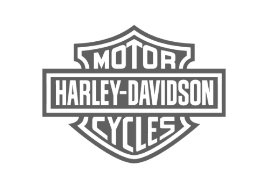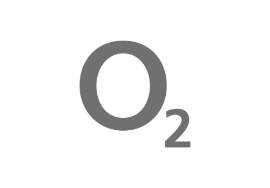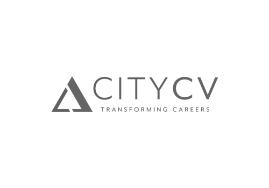In today’s digital age, it’s more important than ever to have a strong online presence. And one of the best ways to do that is through search engine optimisation (SEO). SEO is the process of improving the ranking of a website or web page in search engine results pages (SERPs). The higher a website ranks, the more likely it is to be seen by potential customers.

why is SEO Important?
SEO is important because it can help you attract more visitors to your website. More visitors means more potential customers, which can lead to increased sales and revenue. In fact, studies have shown that SEO can generate up to 1,200% more leads than traditional outbound marketing methods.
How does SEO work?
Search engines use a complex set of algorithms to rank websites. These algorithms take into account a variety of factors, including the quality of the content on the website, the website’s backlink profile, and the technical aspects of the website.

What are the different types of SEO?
There are three main types of SEO: on-page SEO, off-page SEO, and technical SEO.
On-page SEO
On-page SEO is the process of optimising the individual pages of a website to rank higher in search engine results pages (SERPs). This involves a variety of factors, including:
- Keyword research: Identifying the relevant keywords that people are using to search for information related to your business and incorporating those keywords naturally throughout your website’s content.
- Content creation: Producing high-quality, informative, and engaging content that is relevant to your target audience.
- HTML structure: Ensuring that your website’s HTML structure is well-organised and easy for search engines to understand.
- Title tags and meta descriptions: Crafting clear and concise title tags and meta descriptions that accurately represent the content of your web pages.
- Image optimisation: Using relevant image alt text and file names to help search engines understand the content of your images.
- Internal linking: Creating a strong internal linking structure to help search engines navigate your website and discover your most important pages.
- Mobile-friendliness: Ensuring that your website is responsive and easy to use on mobile devices, as a significant portion of internet traffic now comes from smartphones and tablets.
Off-page SEO
Off-page SEO is the process of building backlinks to your website from other high-quality websites. Backlinks are essentially votes of confidence from other websites, and the more backlinks you have, the higher your website will rank in search engine results.
There are a number of ways to build backlinks, including:
- Guest blogging: Writing high-quality guest blog posts for other websites in your industry.
- Creating linkable assets: Producing valuable content, such as infographics, research reports, or downloadable guides, that other websites are likely to link to.
- Building relationships: Networking with other website owners and bloggers in your industry to build relationships and exchange links.
- Participating in online communities: Actively participating in online forums, discussion groups, and social media communities to increase your website’s visibility and earn backlinks.
Technical seo
Technical SEO is concerned with the technical aspects of your website that can affect its ranking in search engine results. This includes factors such as
- Website loading speed: Ensuring that your website loads quickly on all devices, as slow loading times can negatively impact user experience and search engine rankings.
- Mobile-friendliness: Making sure your website is responsive and easy to use on mobile devices, as search engines now prioritise mobile-friendly websites.
- URL structure: Using a clear and consistent URL structure that is easy for both users and search engines to understand.
- Sitemap: Creating a sitemap that clearly outlines the structure of your website and helps search engines discover all of your important pages.
- Error-free code: Ensuring that your website is free of errors and bugs that can prevent search engines from crawling and indexing your pages properly.
Sound good?
How to improve website SEO?
There are a number of things you can do to improve your website’s SEO. Here are a few tips:
- Use relevant keywords: Keywords are the words and phrases that people enter into search engines to find information. When you optimise your website’s content for relevant keywords, you make it more likely that your website will appear in search results when people are looking for information related to your business.
- Create high-quality content: The quality of your website’s content is one of the most important factors in SEO. Search engines favour websites that offer valuable, informative, and engaging content that addresses the needs and interests of their target audience.
- Build backlinks: Backlinks are links from other websites to your website. Backlinks are like votes of confidence from other websites, and the more backlinks you have, the higher your website will rank in search engine results.
- Optimise your website for technical SEO: Technical SEO is an integral part of the overall SEO strategy, encompasses the optimisation of your website’s technical aspects to enhance its search engine visibility and ranking. By addressing technical SEO issues, you can ensure that your website is not only user-friendly but also crawlable and indexable by search engines, leading to improved search performance and organic traffic.
How long does it take to see results from SEO?
SEO is a long-term process, and the timeframe for seeing results can vary depending on a number of factors, including the competitiveness of your industry, the quality of your website’s content, and the strength of your backlink profile. In general, it can take anywhere from 3 to 12 months to start seeing significant improvements in your website’s ranking and traffic from SEO.
Here’s a breakdown of what you can expect in terms of SEO results over time:
3-6 months
During this initial phase, you may start to see small improvements in your website’s ranking for long-tail keywords, which are less competitive terms that are more likely to be searched by people who are actively looking for information related to your business.
6-12 months
As your SEO efforts continue to gain traction, you should start to see more significant improvements in your website’s ranking for both long-tail and short-tail keywords. This is when you can expect to see a noticeable increase in organic traffic to your website.
12 months and beyond
Beyond the first year, the impact of SEO will continue to grow, and you should see consistent improvements in your website’s ranking and traffic. This is the stage where SEO starts to really compound, and you can expect to see a steady stream of organic visitors to your site.
Overall, SEO is a complex but essential part of any marketing strategy. By understanding the basics of SEO, you can start to improve your website’s ranking and attract more visitors.
If you’re looking for more help with SEO, please contact our Folks at CreativeFolks. We can help you develop and implement a comprehensive SEO service plan and SEO strategy that will help you achieve your marketing goals.
To get in touch with our Northampton SEO team, call on 01604 420 430, or send us a message via our contact page.













